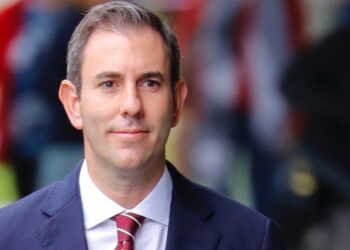Australia is becoming increasingly recognised as an attractive investment opportunity against global counterparts, recent analysis has found.
Australia now ranks as the sixth greatest destination for international investment, new data from QIC has revealed.
In a recent analysis that compares the world’s 50 largest economies across demographics, economic activity, debt, and governance, Australia’s overall ranking only trailed behind Norway, Ireland, Saudi Arabia, Sweden, and Denmark.
“This places us well ahead of many of our advanced economy peers who are our most likely competitors for foreign capital,” QIC chief economist Matthew Peter said.
Namely, Australia surpasses leading economies such as the US, which placed 20th, in addition to New Zealand, the UK, Switzerland, Germany, and Canada.
According to Peter, the nation’s popularity as an offshore investment opportunity is only poised to trend higher.
“Projecting out to 2050, we rise to fourth on the overall ranking, behind only the Scandinavians: Norway (which retain their number one ranking), Sweden (2nd) and Denmark (3rd),” Peter said.
The QIC said that Australia’s strong performance is reflected in its top 10 rankings across key areas: eighth in demographics, ninth in economic activity, and 10th in governance.
Peter said: “Our weakest performance is in the debt imbalance category, where we rank 15th in 2023 rising by only one position, to 14th, by 2050.”
In terms of demographics, Australia boasts the strongest population growth rate in the world at 2.4 per cent, equalled only by Nigeria, translating into a 2.9 per cent rate of growth in population of working age.
“Our strong population growth rates translate into strong scores on economic activity, particularly for an advanced economy,” Peter said.
Moreover, Australia’s trend employment growth rate of 1.9 per cent is more than twice that of the global average and the US’ rate of 0.8 per cent.
According to the chief economist, this supports a strong trend growth rate in Australian GDP, which is currently estimated to be 2.3 per cent, surpassing the US and Canada, in addition to advanced economies in Asia and Europe.
“Looking forward to 2050, Australia’s relatively strong population growth enables us to hang on to our robust economic growth, with trend GDP growth falling to just 2.2 per cent,” Peter said.
Turning to Australia’s weaker rating in debt imbalance measures, QIC said its position is weighed down by its net foreign debt position, which sits at 32 per cent of GDP.
“This offsets a favourable public sector debt position where gross government debt is just 55 per cent of GDP, which is significantly lower than the global average of 85 per cent. Australia’s ranking improves only marginally to 14th by 2050,” Peter said.
While acknowledging that Australia’s debt imbalance ranking is an area in which Australia has scope to improve, Peter reiterated that the country’s fundamentals still compare favourably against the world’s 50 largest economies.
“Strong demographics, economic activity and governance make it a desirable destination for international investors, both now and into the future,” he said.




